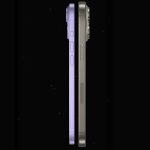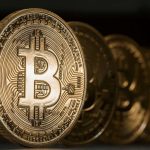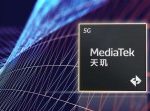Hundreds of Donald Trump supporters who participated in the January 6, 2021, riot at the U.S. Capitol have been charged with “corruptly” obstructing an “official proceeding”—i.e., the congressional ratification of Joe Biden’s victory, which was interrupted by the riot. An expected federal indictment of Trump is likely to include that charge as well. But there are serious questions about whether this statute, 18 USC 1512(c), applies to the rioters’ conduct and whether it also covers what Trump himself did.
Congress enacted Section 1512(c) in response to the Enron scandal, which involved the destruction of incriminating documents by the company’s auditor, the accounting firm Arthur Andersen. Section 1512(c)(1) makes it a felony, punishable by up to 20 years in prison, to “corruptly” alter, destroy, mutilate, or conceal “a record, document, or other object” with “the intent to impair the object’s integrity or availability for use in an official proceeding.” Section 1512(c)(2), the provision invoked in the Capitol riot cases, applies the same penalties to someone who “otherwise obstructs, influences, or impedes any official proceeding, or attempts to do so.”
Prior to the January 6 cases, this provision had been used mainly to prosecute people for concealing or falsifying evidence. One question raised in appeals by accused rioters is whether the congressional tally of electoral votes qualifies as an “official proceeding,” and courts have accepted the government’s argument that it does. But the appeals also have raised two more-nettlesome issues of statutory interpretation: What does “corruptly” mean in this context, and what sorts of conduct does Section 1512(c)(2) encompass?
Addressing the latter issue in March 2022, U.S. District Judge Carl Nichols rejected a broad interpretation of Section 1512(c)(2) that would cover acts of trespassing, assault, or vandalism (each of which is independently criminal) that interfered with the electoral tally. Rather, he said, the provision should be read to cover conduct similar to the evidence-concealing actions described in Section 1512(c)(1).
Nichols said the statutory text “supports three possible readings”: “It is possible that subsections (c)(1) and (c)(2) are not related at all (though this is not a very plausible interpretation). Subsection (c)(1) may contain just examples of the much broader prohibition contained in subsection (c)(2). Or subsection (c)(2) may be limited by subsection (c)(1).” Keeping in mind the “rule of lenity,” which cautions against broad application of ambiguous criminal statutes, Nichols settled on the third interpretation.
A three-judge panel of the U.S. Court of Appeals for the D.C. Circuit rejected Nichols’ narrow reading in a decision last April. It concluded that Section 1512(c)(2) was broad enough to encompass “assaultive conduct” that was “committed in furtherance of an attempt to stop Congress from performing a constitutionally required duty.”
Dissenting from that decision, Judge Gregory Katsas disputed the majority’s conclusion that “the second subsection applies to obstruction that bears no relationship to the specific acts of spoliation covered by the first subsection.” Katsas also raised the issue of how to read “corruptly,” which the majority did not definitively address. A broad reading of that term, he warned, could have perverse and unjust consequences.
“The lead opinion invokes other opinions stating that the use of unlawful means is sufficient, but not necessary, to show corrupt action,” Katsas wrote. But “even if independently unlawful means were necessary, section 1512(c)(2) still would cover large swaths of advocacy, lobbying, and protest.” He offered some examples (citations omitted):
A protestor who demonstrates outside a courthouse, hoping to affect jury deliberations, has influenced an official proceeding (or attempted to do so, which carries the same penalty). So has an EPA employee who convinces a member of Congress to change his vote on pending environmental legislation. And so has the peaceful protestor in the Senate gallery. Under an unlawful-means test, all three would violate section 1512(c)(2) because each of them broke the law while advocating, lobbying, or protesting. And each would face up to 20 years’ imprisonment—rather than maximum penalties of one year, a criminal fine, and six months, respectively. So while this approach would create an escape hatch for those who influence an official proceeding without committing any other crime, it also would supercharge a range of minor advocacy, lobbying, and protest offenses into 20-year felonies. That still gives section 1512(c)(2) an improbably broad reach, because it posits that the Corporate Fraud Accountability Act extended the harsh penalties of obstruction-of-justice law to new realms of advocacy, protest, and lobbying.
The D.C. Circuit has not yet settled on a definition of “corruptly,” an issue raised by a pending case. That case, The New York Times reports, “could be decided any day now.”
How do these concerns apply to the potential case against Trump? Unlike the January 6 defendants, he did not participate in the riot. The argument that he violated Section 1512(c)(2) therefore hinges on actions that either promoted that outcome or were otherwise aimed at obstructing the electoral vote count.
One theory, suggested by the House select committee that investigated the circumstances leading to the riot, is that Trump violated Section 1512(c)(2) when he summoned his supporters to a “Stop the Steal” rally in Washington, D.C., on the day that Congress was meeting to certify Joe Biden’s victory, then riled them up with a fiery speech and pointed them toward the Capitol.
Even more than the scenarios outlined by Katsas (which involve expressive activity that runs afoul of other laws), that rationale raises obvious First Amendment concerns. It is doubtful that Trump’s speech the day of the riot, which despite its inflammatory tone did not explicitly urge anything other than peaceful protest, was “directed” at inciting “imminent lawless action,” as required by the test that the Supreme Court established in the 1969 case Brandenburg v. Ohio.
Another theory proposed by the January 6 committee seems more promising. The committee noted that “President Trump was attempting to prevent or delay the counting of lawful certified electoral college votes from multiple States” by encouraging Republicans in seven battleground states to present themselves as “duly elected and qualified” electors. Republican members of Congress cited those “contingent” slates of electors as a reason for objecting to Biden’s electors, and Trump unsuccessfully pressured Vice President Mike Pence to reject the Biden slates.
As evidence that “President Trump acted with a ‘corrupt’ purpose,” the committee noted that Pence, his legal counsel, “and others” repeatedly told Trump that “the Vice President had no unilateral authority to prevent certification of the election.” Trump also “knew that he had lost dozens of State and Federal lawsuits, and that the Justice Department, his campaign and his other advisors concluded that there was insufficient fraud to alter the outcome.” And he knew that “no majority of any State legislature had taken or manifested any intention to take any official action that could change a State’s electoral college votes.” But he “pushed forward anyway.”
That evidence indicates Trump should have known that he did not really win reelection and that there was no legal basis for Pence to interfere in the ratification of Biden’s victory. Whether Trump actually knew that is a different question.
Rudy Giuliani, John Eastman, and the other lawyers whose advice Trump preferred were reinforcing his avowed belief that he had been cheated and assuring him that legally viable options were available to correct that imagined injustice, including the “contingent” electors scheme. As the Times notes, “some legal experts have said that Mr. Trump could mount an attack against the obstruction charge, if it is brought by [Special Counsel Jack] Smith, by arguing that he truly believed he had been robbed of victory by fraud in the election and, therefore, could not be accused of having acted corruptly.”
The Times suggests that a recent decision by U.S. District Judge Royce Lamberth “could set a legal basis for refuting any attempts by the former president” to argue that he did not act “corruptly.” The case involved a January 6 rioter, Alan Hostetter, who was charged with obstruction of an official proceeding and argued that he was not guilty of that crime because he honestly believed Trump had been cheated of his rightful victory.
“Even if Mr. Hostetter genuinely believed the election was stolen and that public officials had committed treason, that does not change the fact that he acted corruptly with consciousness of wrongdoing,” Lamberth wrote. “Belief that your actions are serving a greater good does not negate consciousness of wrongdoing.”
But in addition to the obstruction charge, Hostetter was accused (and convicted) of “entering and remaining in a restricted building or grounds with a deadly or dangerous weapon” and “disorderly or disruptive conduct in a restricted building or grounds with a deadly or dangerous weapon.” If “unlawful means is sufficient…to show corrupt action” under Section 1512(c)(2)—the theory that Katsas criticized in his D.C. Circuit dissent—those independent crimes were enough to establish that element.
Trump’s situation is different. His “consciousness of wrongdoing” hinges on whether he knew he was getting bad legal advice from Eastman et al. If he believed their assurances, he lacked the “corrupt purpose” that the January 6 committee alleged. That’s why Pence, who was the main target of the machinations that the committee described as a criminal conspiracy, says he is “not convinced that the president acting on bad advice of a group of crank lawyers that came into the White House in the days before January 6 is actually criminal.” So even if the D.C. Circuit’s broad reading of the statute is correct, proving that Trump violated it will be a tall order.
The post 2 Reasons It’s Not Clear That Trump ‘Corruptly’ Obstructed an Official Proceeding appeared first on Reason.com.







